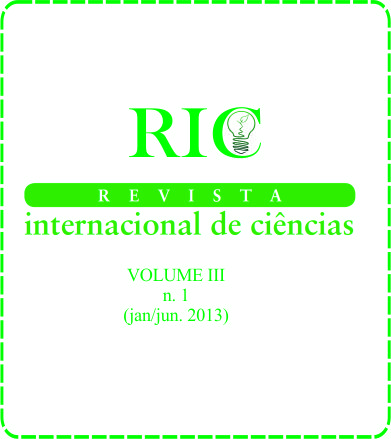THE USE OF ENVIRONMENTAL INDICATORS BASED ON THE AIR QUALITY INDEX, AS TOOL FOR THE ESTABLISHMENT OF PUBLIC POLITICS
DOI:
https://doi.org/10.12957/ric.2013.7061Resumo
Betim, integral city of the MRBH - Metropolitan Region of Belo Horizonte, counts with a net of Air Quality Monitoring, consisting of four manual stations operated by the Siderúrgica Metalsider Ltda. Enterprise which monitor Particulate Material, being three the stations which monitor TPS (Total Particles in Suspension) and one which monitors IP (Inhalable Particles) parameter, installed since 2005 with the start of operation in February, except the Cachoeira Station operating since October 2005.The results are converted by the methodology AirQI (Air Quality Index) developed by USEPA to legally define an upper limit for the concentration of an atmospheric component that, if exceeded, could cause pollution or environmental degradation. The quality indexes for TPS (Total Particles in Suspension) were inadequate in Santa Cruz Station, 2, 6 and 2 times respectively in 2006, 2007 and 2008 with concentrations of 232,302 and 268 µg/m3 and no one in the Cachoeira Station, this effectively under the influence of the monitored company, with maximum concentrations of 122, 205 and 167 µg/m3. In the Central Station, the quality was Inadequate once in 2007 and other time in 2008 for IP. Valid values obtained for the air quality indexes in Betim are resulted from the Inhalable Particles concentrations (PM-10) in Central Station - CEABE which were 122.205 and 167 µg/m3 from 2006 to 2008. The annual standard allowed by Law which is 50 g/m3.
DOI 10.12957/ric.2013.7061
Downloads
Publicado
Como Citar
Edição
Seção
Licença
Os Direitos Autorais dos artigos publicados na revista Revista Internacional de Ciências pertencem ao(s) seu(s) respectivo(s) autor(es), com os direitos de primeira publicação cedidos à RIC.
Os artigos publicados são de acesso público, de uso gratuito, com atribuição de autoria obrigatória, para aplicações de finalidade educacional, de pesquisa de acordo com o modelo de licenciamento Creative Commons 4.0 adotado pela revista.
A Revista Internacional de Ciências utiliza uma Licença Creative Commons Atribuição 4.0 Internacional.



